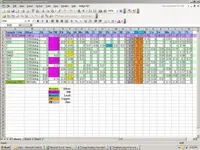mts
Bronze Member
I currently use a metal detector to sort cents. It has trouble telling the difference between Indian heads, old wheat cents, and zinc cents. This is due to the various composition differences over the years:
1859 - 1864 IH = Copper + Nickel
1864 - 1909 IH = Copper + Tin (Bronze)
1909 - 1942 Wheat = Copper + Tin (Bronze)
1944 - 1946 Wheat = Copper + Zinc (Brass)
1947 - 1962 Wheat = Copper + Tin (Bronze)
I was wondering how the Ryedale handles this? Do you basically have to try and pull these out by hand or do you rerun certain cents using a different comparator setting to pull these out?
1859 - 1864 IH = Copper + Nickel
1864 - 1909 IH = Copper + Tin (Bronze)
1909 - 1942 Wheat = Copper + Tin (Bronze)
1944 - 1946 Wheat = Copper + Zinc (Brass)
1947 - 1962 Wheat = Copper + Tin (Bronze)
I was wondering how the Ryedale handles this? Do you basically have to try and pull these out by hand or do you rerun certain cents using a different comparator setting to pull these out?
Upvote
0





